The MSI MEG Ai1300P PCIE5 1300W PSU Review: The ATX 3.0 Era Has Begun
by E. Fylladitakis on December 8, 2022 11:00 AM EST- Posted in
- Cases/Cooling/PSUs
- PSUs
- MSI
- PCIe 5.0
- ATX v3.0
Cold Test Results (~22°C Ambient)
For the testing of PSUs, we are using high precision electronic loads with a maximum power draw of 2700 Watts, a Rigol DS5042M 40 MHz oscilloscope, an Extech 380803 power analyzer, two high precision UNI-T UT-325 digital thermometers, an Extech HD600 SPL meter, a self-designed hotbox and various other bits and parts. For a thorough explanation of our testing methodology and more details on our equipment, please refer to our How We Test PSUs - 2014 Pipeline post.
The efficiency of the MSI MEG Ai1300P does meet the 80Plus Platinum certification requirements when it is powered from an 115 VAC source. However, when the main’s voltage is 230 VAC, the efficiency is raised by an average of 1%, which is not enough to meet the 80Plus Platinum requirements for that input voltage. The average nominal load efficiency (20% to 100% of the unit's capacity) is 92.1% with the unit powered from a 230 VAC source, and drops down to 91.3% if the unit is powered by a 115 VAC source. It is also interesting to note that its efficiency under very low loads is quite high, at above 83% for a 5% load.
The fan of the MSI MEG Ai1300P PCIE5 is thermally controlled by default, with the unit keeping it disabled until the load was over 430-440 Watts. Regardless, the internal temperature of the PSU is quite low considering the massive power output. Once the fan does start, it is very quiet at first but then speeds up very quickly as the load increases, making the Ai1300P clearly audible when the load is greater than 800 Watts.


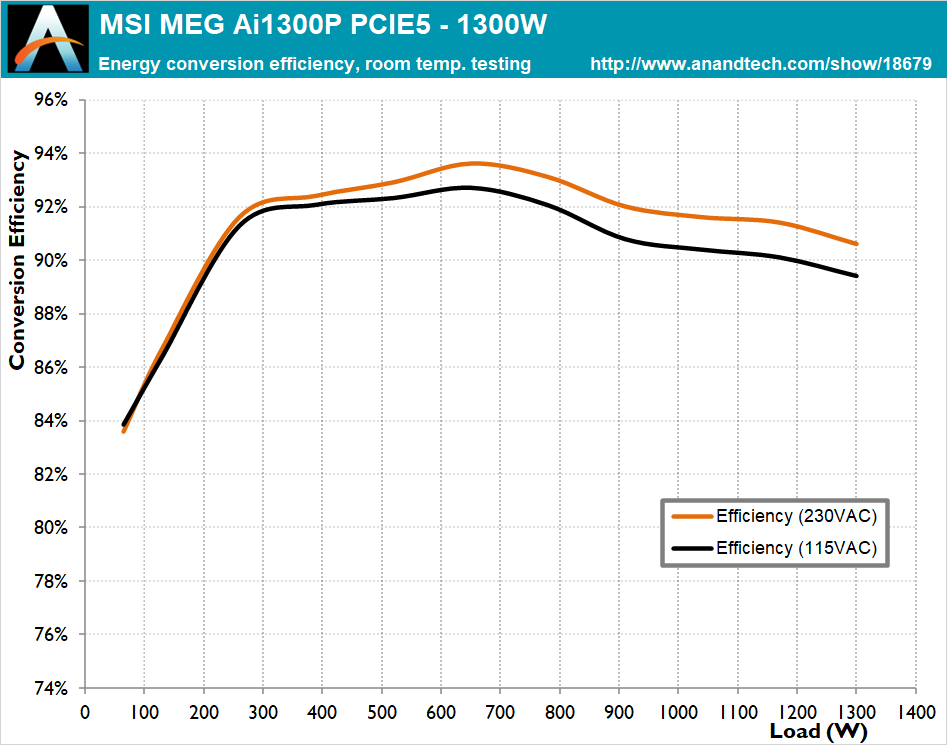
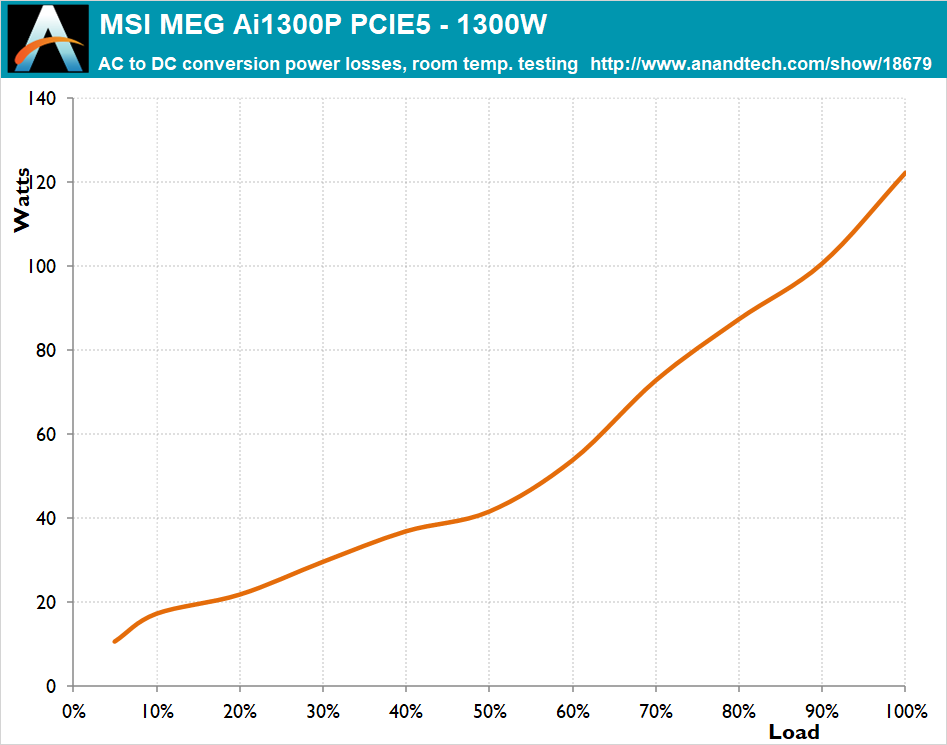
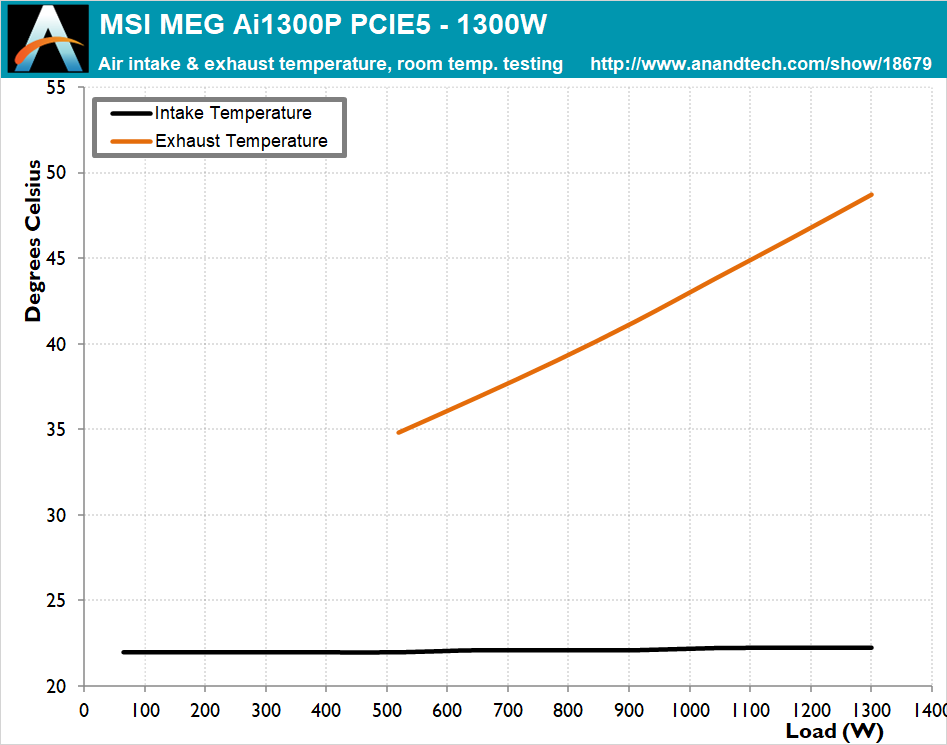
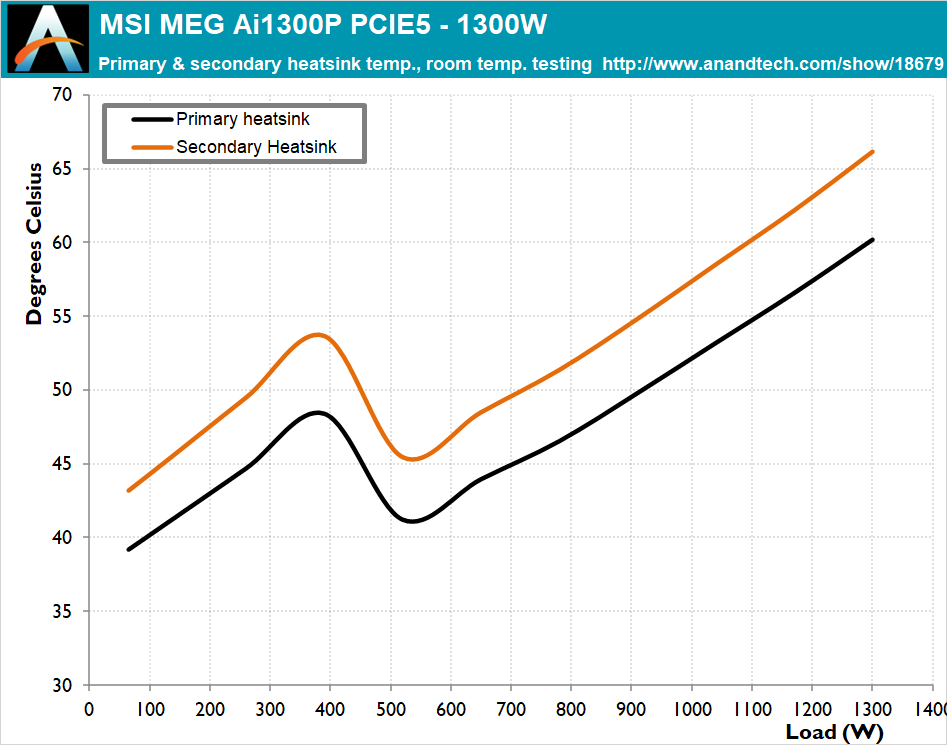
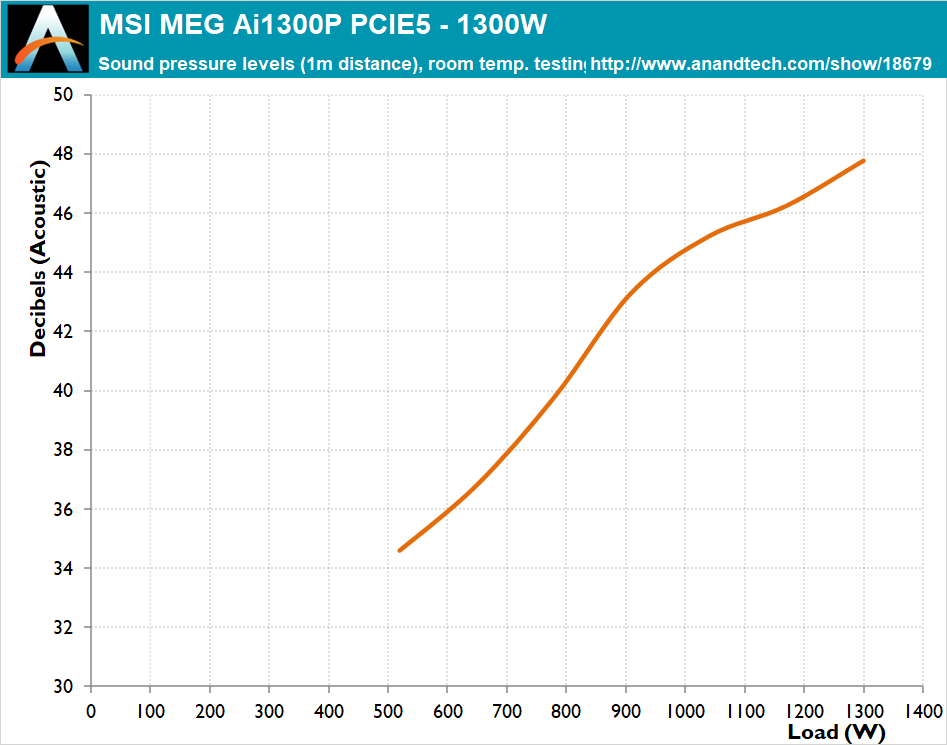








67 Comments
View All Comments
Dug - Thursday, December 8, 2022 - link
I wish they would have changed the form factor. So tired of these unnecessarily large bulky designs.TheinsanegamerN - Thursday, December 8, 2022 - link
Tell me about it, why is the industry so allergic to SFX?at_clucks - Thursday, December 8, 2022 - link
Getting high power and high efficiency and ideally low noise in a small package like SFX is both hard and expensive, and depending on the combination even impossible. For now SFX isn't really great as you get closer to the the power levels in this review. And the price certainly isn't.meacupla - Thursday, December 8, 2022 - link
Asus offers 1200W in SFX-L form factor.At 1200W, I think it would handle transient spikes from a 3090Ti no problem.
Now how much does this Asus 1200W SFX-L PSU cost? No clue.
at_clucks - Tuesday, December 20, 2022 - link
SFX-L is better than standard SFX in the sense that it can fit a 120mm fan, which should make a difference. Regardless, the main limitation will always be there, making a smaller or larger difference: The SFX package is smaller. Everything else being identical (components, quality, etc.) there will always be the same heat concentrated in a smaller package (so hotter, less reliable, or noisier). To mitigate this SFX PSUs always have to be better. Better costs which makes the industry position SFX as niche and premium. People are allergic to spending too much so this is why SFX takes time to replace ATX.Add on top that companies like Nvidia are pushing power consumption for performance rather than efficiency and I'm not surprised ATX still rules.
Oxford Guy - Thursday, December 8, 2022 - link
Because 50 dB isn’t “audible” enough.Eliadbu - Friday, December 9, 2022 - link
I don't know about SFX but EVGA released some exceptionally good PSUs like th G7 at small spectrum of ATX PSU. Personally I have the P6 and working with it inside a case like O11 is a treat.QueBert - Thursday, December 8, 2022 - link
Poorly designed for future proofing, it's ATX 3.0 ready, that's great. But it only has a single 12VHPWR, next gen Nvidia's will probably need 2 of those suckers I bet. And then this PSU will already be pointless.Samus - Friday, December 9, 2022 - link
I don't think we will have consumer graphics cards use two 12VHPRW connectors anytime soon because that would imply over 600w draw just for the graphics card. Since these kinds of cards would likely be used in monstrously powerful systems, paired with a 200-250w TDP CPU, add platform overhead and an SSD, that's 1000w at load. With the way climate change is a buzz word and rising energy costs, it's about time these companies focus on efficiency.The problem is, much like the automotive industry and so many others, the efficiency gains made by technological, engineering and manufacturing innovations is wasted by constantly delivering more power to the consumer. This is why we have 300+HP 3-cylinder engines in grocery getter Corollas that get 25MPG instead of 150HP 3-cylinder engines that get 50MPG.
TheinsanegamerN - Saturday, December 10, 2022 - link
The hybrid gets 44 MMPG, nothing is stopping you from buying it.